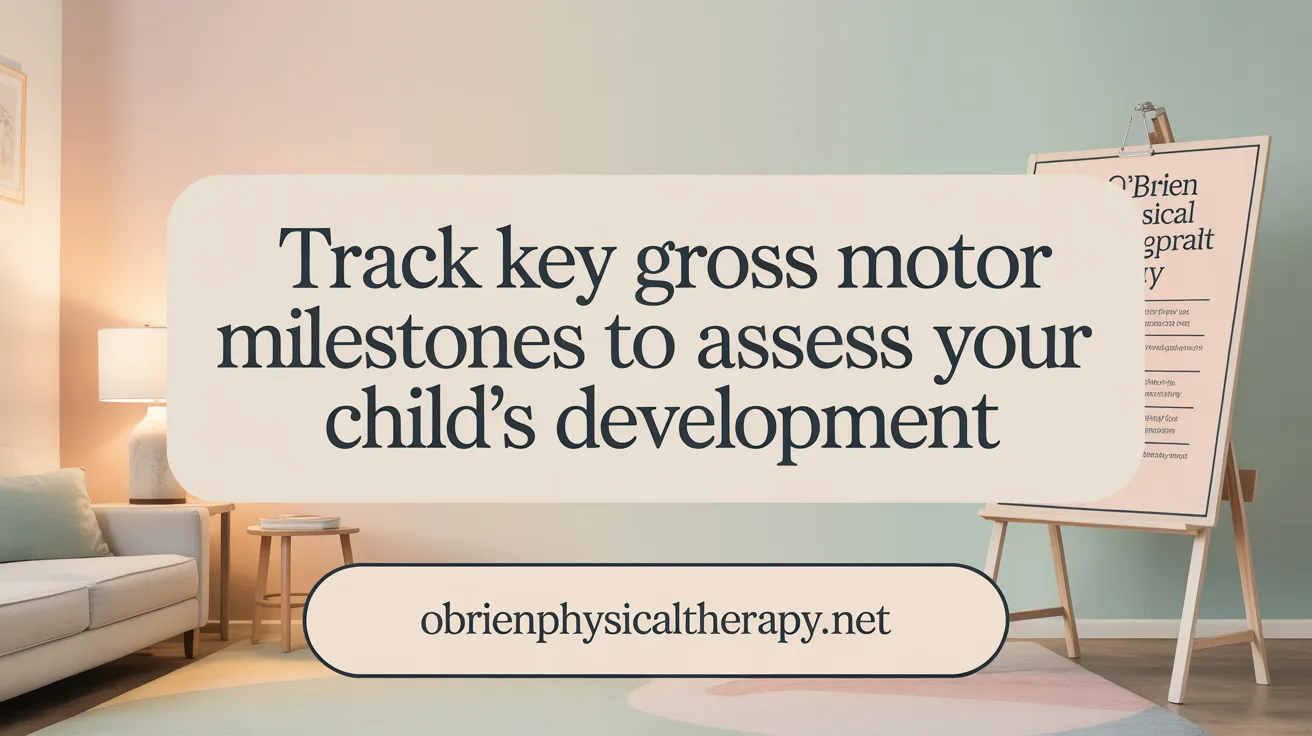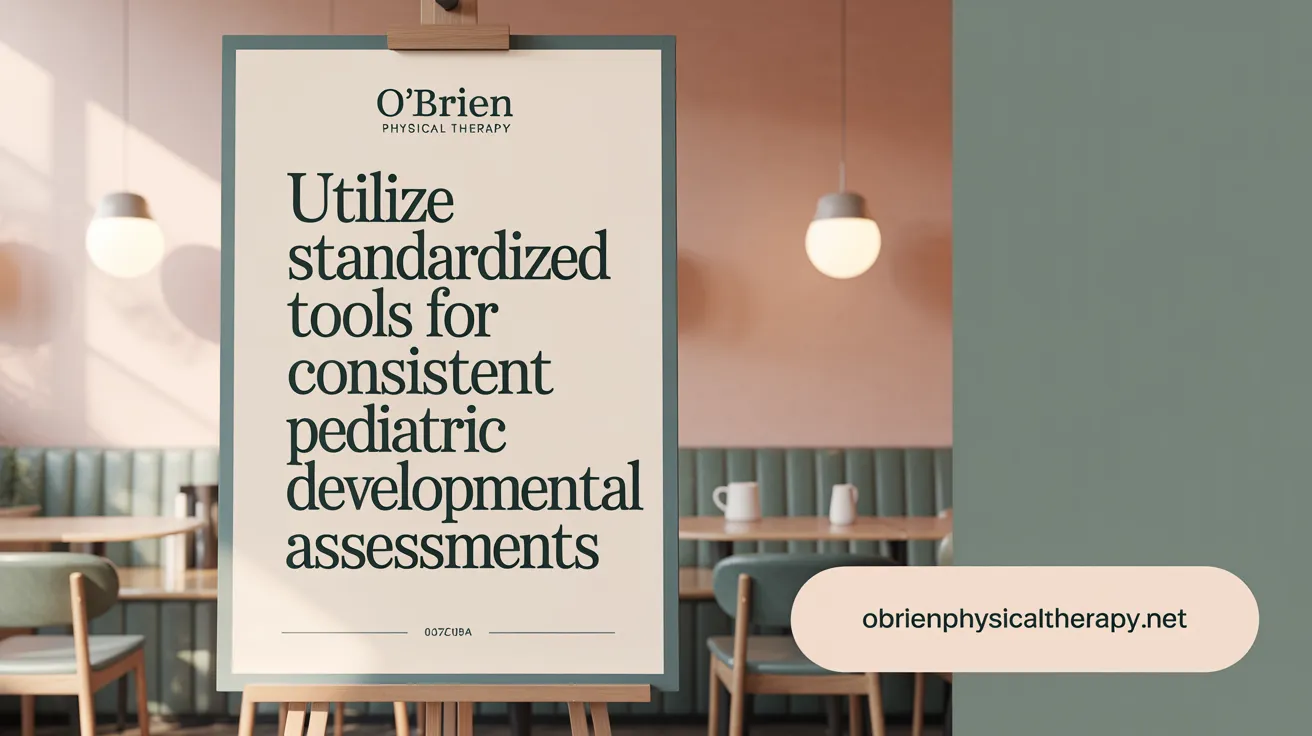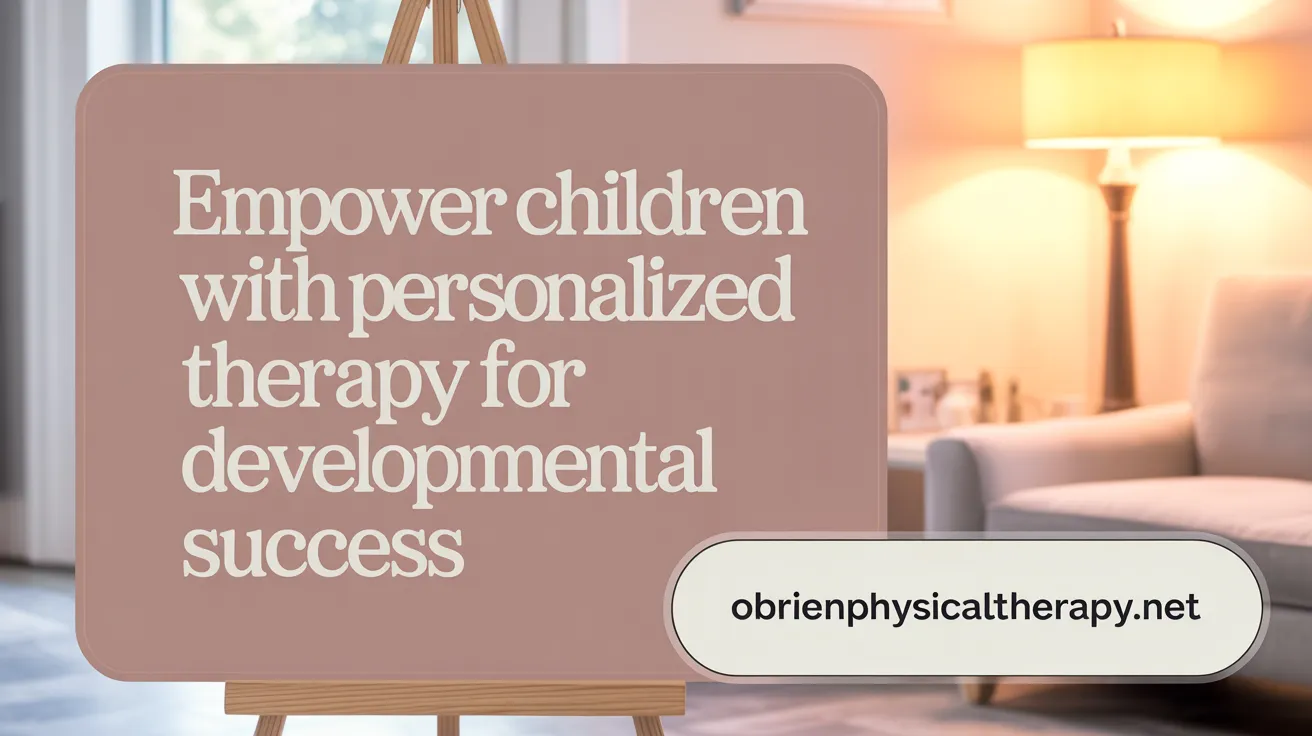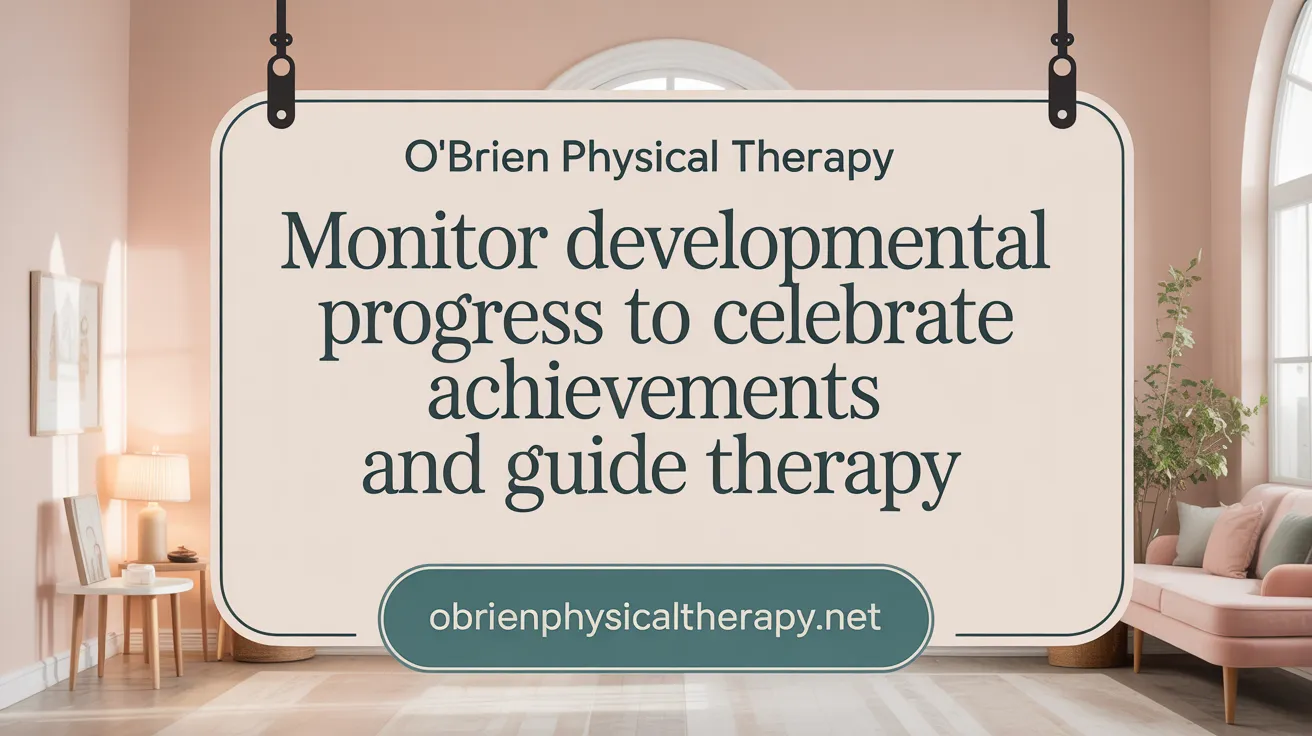Understanding the Role of Developmental Milestones in Therapy Outcomes
Pediatric physical therapy plays a pivotal role in supporting children with developmental delays, disabilities, or injuries by facilitating the achievement of key motor and functional milestones. Developmental milestones provide quantifiable indicators of progress, enabling therapists and families to assess the effectiveness of interventions and tailor care to individual needs. This article explores the significance of these milestones, their standardization, and how pediatric physical therapy outcomes are measured by the numbers across different developmental domains.
Developmental Milestones: The Backbone of Pediatric Assessment
What are developmental milestones and why are they important in pediatric physical therapy?
Developmental milestones are specific physical and behavioral skills that most children typically acquire within broad age ranges. These milestones span key domains such as gross motor skills (e.g., sitting, crawling, walking), fine motor skills (e.g., grasping, drawing), language, cognitive, and social-emotional development. They serve as essential benchmarks that help pediatric physical therapists and healthcare providers gauge a child’s typical growth and identify any delays early. For a detailed Developmental milestones overview, please see this resource.
In pediatric physical therapy, tracking developmental milestones is critical. It provides foundational guidance for assessing a child’s progress and targeting interventions. Early identification of delays through milestone assessment allows therapists to implement personalized therapy plans—such as strengthening, balance training, or coordination exercises—that can dramatically improve developmental outcomes. Learn more about Goals of pediatric physical therapy.
How are developmental milestones typically categorized and assessed?
Milestones are grouped into the following domains:
- Gross Motor: Skills related to whole-body movements like rolling, sitting without support, crawling, and walking.
- Fine Motor: Manual dexterity skills such as pincer grasp, scribbling, stacking blocks, and using utensils.
- Language and Communication: From babbling to using full sentences.
- Cognitive: Abilities like understanding commands, problem-solving, and pretend play.
- Social-Emotional: Behaviors including stranger anxiety, playing with others, and sharing.
To ensure accurate and consistent assessment, pediatricians and therapists use standardized milestone checklists and screening tools. Examples include the CDC’s age-based milestone checklists, the Denver Developmental Screening Test, and Ages and Stages Questionnaires (ASQ). These tools are implemented routinely during well-child visits at key ages—commonly at 9, 18, and 30 months—to monitor general development and spot possible concerns early. Additional resources for promoting development can be found in CDC Learn the Signs Act Early.
Why is adjustment for prematurity necessary in milestone assessment?
For infants born prematurely, developmental milestones are assessed relative to their corrected gestational age rather than chronological age. This adjustment is crucial since these children often reach milestones later due to early birth. For example, a baby born 8 weeks early should have milestones evaluated as if they are 8 weeks younger than age by date of birth. This approach is described in detail under Premature infants developmental adjustment.
Avoiding premature assessment reduces unnecessary alarm and ensures more accurate identification of true developmental delays. Nonetheless, prolonged follow-up and adjustment are necessary, especially within the first 24 to 36 months. See more on Corrected gestational age assessment.
Early identification and associated conditions
Timely detection of developmental delays through milestone surveillance is essential. It facilitates early intervention services—including physical, occupational, and speech therapies—that have proven benefits. Delays in any domain may signal underlying conditions such as cerebral palsy, autism spectrum disorder, Down syndrome, or cognitive impairments. Read further about Early detection of developmental delays.
Children with language delays, for example, may be at risk for later literacy and cognitive challenges. Recognizing these concerns early enables providers to tailor therapy and support, often improving lifelong functional outcomes. Explore Speech therapy in early childhood and Intervention therapies for developmental delays.
| Aspect | Details | Importance |
|---|---|---|
| Domains | Gross motor, fine motor, language, cognitive, social | Comprehensive developmental assessment |
| Standardized Tools | CDC checklists, Denver Test, ASQ | Consistency and early detection |
| Prematurity Adjustment | Use corrected gestational age | Precision in assessing developmental progress |
| Early Intervention | Therapies based on milestone screening | Improved developmental outcomes |
| Conditions Identified | Cerebral palsy, autism, language delays | Guides targeted therapy and support |
Quantifying Gross Motor Progress: Milestones from Infancy to Early Childhood

What are the key gross motor developmental milestones tracked in pediatric physical therapy?
Gross motor development is critical in early childhood and is closely monitored by pediatric physical therapists. Key milestones include lifting the head by around 2 months; rolling over by 4 to 6 months; sitting independently between 6 to 8 months; crawling by 9 to 12 months; walking independently generally around 12 months; running and climbing by 18 to 24 months; and more complex skills like hopping and skipping by ages 4 to 6 years. These milestones serve as objective benchmarks for therapists to assess a child's motor progress and to identify delays that may warrant intervention. For a detailed overview, see Gross motor developmental milestones and Pediatric Physical Therapy Milestones.
How have recent updates in milestone checklists affected pediatric physical therapy evaluations?
The CDC revised its developmental milestone checklists recently, notably removing crawling as a required milestone. This change arose from crawling's variability among children and limited evidence that it is a necessary precursor for walking or later skills. The updated guidelines focus on milestones that 75% of children reliably achieve by specific ages, enhancing consistency and evidence-based assessment. Pediatric physical therapists use these refined checklists to improve the accuracy of developmental screening and to concentrate therapeutic efforts on milestones most predictive of functional outcomes. Detailed information can be found in Learn the Signs Act Early updated milestone checklists and CDC developmental milestones.
What are typical timelines for sitting, crawling, walking, running?
- Sitting without support: typically achieved between 6 to 8 months.
- Crawling: usually begins between 9 to 12 months, though some children may skip crawling.
- Walking independently: around 12 months is common, with a range from 8 to 18 months.
- Running: often develops by 18 to 24 months as coordination improves.
These timelines represent average age ranges but include natural variation among children. For more age-specific milestone checklists, refer to CDC developmental milestones and Child Development Milestones.
What is the impact of gross motor skills on overall development?
Gross motor milestones not only indicate physical growth but also influence cognitive, social-emotional, and adaptive development. Delays in acquiring these skills may affect a child's ability to explore their environment, interact with peers, and build independence. Early motor proficiency supports greater confidence and participation in age-appropriate activities, contributing positively to overall well-being. Learn more about the connection in Developmental milestones overview and Importance of early developmental assessment.
What are examples of delayed motor milestones and clinical red flags?
Warning signs include inability to lift the head by 3 months, failure to sit without support by 9 months, not crawling or moving in a purposeful way by 12 months, or not walking independently by 18 months. Such delays might suggest underlying conditions like cerebral palsy, developmental coordination disorder, or sensory processing issues. Early detection through surveillance and screening allows timely referral to physical therapy and other interventions, which are critical for improving long-term outcomes. For guidance on identifying delays and appropriate referrals, see Early detection of developmental delays and Developmental milestones and screening tools.
Standardized Outcome Measures in Pediatric Physical Therapy Practice

What standardized outcome measures are used in pediatric physical therapy to track progress?
Pediatric physical therapy employs a broad spectrum of standardized outcome measures (OMs) to assess children's progress effectively. Among these, patient-reported outcomes (PROs) in pediatric therapy are key tools that capture crucial aspects such as functional status—encompassing activities and participation—and symptom status experienced by the child. Research analyzing many intervention studies has identified over 150 different measurement instruments, reflecting a diverse range of approaches to evaluating child development and therapy outcomes (Patient-reported outcomes (PROs) in pediatric therapy).
However, there is a notable gap between the outcome measures taught during professional physical therapy education and those actually used in clinical settings. This discrepancy suggests inconsistencies in training and practice, highlighting the importance of aligning educational curricula with practical clinical tools to improve therapy delivery (Standardized pediatric outcome measures).
How do these outcome measures contribute to evaluating therapy outcomes in children?
Outcome measures offer a structured and objective way to quantify the child's functional abilities, including motor skills, pain levels, participation in daily activities, and overall quality of life. This information allows pediatric physical therapists to:
- Monitor improvements or setbacks over time
- Tailor individualized intervention plans
- Communicate progress effectively with caregivers and interdisciplinary healthcare teams
Such data-driven evaluation is fundamental to evidence-based practice, enabling therapists to adjust treatments responsively and to set achievable goals specific to each child's developmental and health needs (pediatric physical therapy advancements).
Categories and Importance of Harmonizing Outcome Measures
Most PROs fall into broad categories like functional status and symptom assessment, critical to understanding the child's real-world capabilities and challenges. Given the vast number and variability of these tools, harmonizing outcome measures is crucial to:
- Ensure consistency in patient assessments across different settings
- Facilitate comparisons of therapy effectiveness
- Enhance research quality by standardizing metrics used in pediatric physical therapy studies (Harmonizing outcome measures in pediatric physical therapy.
Assessment Tools and Evaluation Techniques
Physical therapists commonly use validated standardized tests combined with clinical observations, caregiver reports, and direct child assessments. These tools provide a comprehensive picture of the child's motor skills, strength, balance, coordination, and sensory processing, aiding in diagnosis, goal setting, and progress tracking (Developmental milestones overview, Physical therapy and child development).
In summary, standardized outcome measures are integral to effective pediatric physical therapy, supporting personalized care and improving therapeutic outcomes through evidence-based evaluation and continuous monitoring (Benefits of Pediatric Physical Therapy).
Early Intervention and Individualized Therapy: Impact on Long-Term Outcomes

Why is early intervention critical in pediatric physical therapy outcomes?
Early intervention exploits the brain's neuroplasticity during infancy and early childhood, a period when developmental pathways are most adaptable. Screening at key ages such as 9, 18, and 30 months can identify delays early, allowing for timely initiation of therapy. This prompt engagement improves gross motor skills, cognition, and social-emotional capabilities, leading to greater long-term independence and a higher quality of life. Natural developmental windows facilitate more effective corrective measures before delays become entrenched. For more details, see CDC developmental milestone guidelines and Early childhood developmental surveillance.
Benefits of early intervention in developmental delays
Intervening early helps minimize severity and duration of developmental impairments. Children with delays in motor skills, language, or cognition gain improved functional mobility and communication abilities. Early therapeutic support also reduces the risk of secondary complications and promotes better participation in social and educational activities. For children born prematurely or with conditions like cerebral palsy or autism spectrum disorder, customized early therapy significantly enhances developmental outcomes. See Intervention therapies for developmental delays, Physical therapy for cerebral palsy and Down syndrome, and Early intervention outcomes.
Therapy approaches and modalities used in pediatric physical therapy
Pediatric physical therapy uses various evidence-based techniques, such as neurodevelopmental therapy, motor learning, strength and aerobic training, and multisensory stimulation. Modern methods include microcurrent therapy, Bobath and Vojta techniques, and play-based, age-appropriate activities to engage children effectively. Therapists also focus on improving range of motion, balance, posture, and coordination. Sessions often incorporate fun, interactive exercises, tailoring care plans to each child’s unique needs. For examples of modalities and approaches, see pediatric physical therapy advancements, Physical therapy for kids, and Physical Therapy for Developmental Delays.
Collaboration with families and multidisciplinary teams
Therapy emphasizes a family-centered approach, involving caregivers to reinforce activities and ensure continuity outside clinical settings. Pediatric therapists work within multidisciplinary teams including speech pathologists, occupational therapists, educators, and medical specialists. This holistic collaboration addresses all aspects of the child’s development and integrates therapy goals with educational and social environments. More on family-centered care and multidisciplinary collaboration can be found at Family-centered care in pediatric PT and Pediatric physical therapy collaboration.
Cases and conditions benefiting from early tailored therapy
Children with developmental delays from preterm birth, genetic disorders, cerebral palsy, autism spectrum disorder, and sensory processing challenges gain significant advantages from personalized early intervention. Early therapy also supports those recovering from injury or surgery, promoting restoration of motor functions and preventing secondary impairments. For additional clinical insights, see Premature infants developmental adjustment, Conditions treated by pediatric physical therapy, and Physical therapy for injury recovery.
Early identification through surveillance and screening, followed by individualized, multidisciplinary intervention, forms the foundation of improved long-term outcomes in pediatric physical therapy. Relevant resources include Developmental screening tools, CDC Learn the Signs Act Early, and Standardized pediatric outcome measures.
Pediatric Physical Therapy’s Role in Addressing Developmental Delays and Disabilities

How does pediatric physical therapy address developmental delays and disabilities?
Pediatric physical therapy (PT) focuses on treating various developmental delays and disabilities that affect a child's motor skills, strength, balance, and coordination. Common conditions treated include cerebral palsy, autism spectrum disorder (ASD), Down syndrome, and delays related to prematurity. Therapists use personalized, evidence-based techniques to improve the child's functional mobility—such as sitting, walking, and running—and encourage participation in daily activities. For more information, see Physical therapy for children, Early intervention in pediatric therapy, and Developmental milestones overview.
Treatment often involves collaboration with speech and occupational therapists to support comprehensive development, addressing communication and fine motor skills alongside gross motor improvements. This multidisciplinary approach helps children overcome physical challenges and promotes better overall development. Learn more about Speech therapy in early childhood and Occupational therapy benefits.
What role do families and caregivers play in pediatric physical therapy outcomes?
Families and caregivers are vital partners in pediatric physical therapy. Their involvement begins with setting clear, achievable goals tailored to the child's needs. Therapists provide education to caregivers about developmental milestones, home exercise programs, and strategies to reinforce therapy gains outside the clinical setting. See Family-centered care in pediatric PT and Empowering families through therapy.
Empowering families helps maintain progress and ensures therapy benefits extend into everyday life. Additionally, caregivers assist by advocating for services and resources, making sure children receive comprehensive support. This family-centered care approach forms the foundation for successful interventions and improved outcomes. For more details, see Supporting family emotional and social challenges and Benefits of pediatric physical therapy.
Examples of pediatric physical therapy impact
- Cerebral palsy: Targeted motor training and strength exercises enhance mobility and coordination. Learn more about Physical therapy for cerebral palsy.
- Autism spectrum disorder: PT helps improve balance and motor planning, often in coordination with speech and occupational therapies to support social and communication skills. See Physical therapy for autism spectrum disorder.
By focusing on increasing physical abilities and functional independence, pediatric physical therapy plays a crucial role in helping children with developmental delays lead more active, engaged lives. For developmental milestones and progression guidance, refer to CDC developmental milestones and Gross motor developmental milestones.
Measuring Success: Tracking Pediatric Physical Therapy Outcomes Through Developmental Milestones

How are developmental milestones used to track progress and success in pediatric physical therapy?
Developmental milestones act as structured markers for evaluating a child's progress in physical therapy. Therapists utilize standardized milestone checklists that cover gross motor skills, fine motor skills, language, cognitive, and social-emotional domains. Monitoring these milestones over time allows therapists to observe meaningful gains in abilities such as sitting, walking, language use, and social interactions. Digital tools, including milestone tracker apps developed by the CDC and other organizations, support caregivers and therapists alike in recording and reviewing progress frequently and conveniently.
Tracking milestones guides therapy planning by highlighting areas requiring further support and confirming successful intervention outcomes. It also empowers families with tangible evidence of their child's improvements, boosting motivation and engagement in therapy. Documentation of progress helps interdisciplinary teams communicate effectively, optimizing individualized care. For in-depth information on developmental milestones overview and CDC developmental milestones, refer to these comprehensive resources.
What considerations are given to special populations, such as preterm infants, in milestone tracking?
Preterm infants require adjusted milestone timelines based on their corrected gestational age assessment rather than chronological age. This practice accounts for their early birth and ensures developmental expectations are more realistically aligned with their physiological maturity. For example, a child born at 32 weeks gestation will have milestones assessed from their expected full-term date, preventing misdiagnosis of developmental delays.
This customized approach facilitates precise detection of true delays versus normal variability, enabling early and appropriate intervention. Therapy goals can then be specifically tailored to each child's adjusted developmental readiness, fostering more effective and realistic progression tracking. More details about premature infants developmental adjustment and early detection of developmental delays can aid understanding.
How does longitudinal tracking of motor and behavioral skills benefit therapy outcomes?
Longitudinal tracking – repeatedly assessing milestones over months or years – captures the child's trajectory of growth and skill acquisition rather than isolated snapshots. This comprehensive picture helps identify patterns such as steady improvement or plateauing, informing timely therapy modifications.
Consistent milestone monitoring supports early detection of emerging delays or regressions, prompting referrals or additional interventions. It also validates the long-term effectiveness of therapy by demonstrating sustained gains in movement, coordination, language, and social skills, crucial for functional independence. Research on pediatric physical therapy advancements and standardized pediatric outcome measures underscores the importance of such tracking.
How do milestone tracking and measurable progress impact self-esteem and quality of life?
Visible improvements in motor skills and communication contribute greatly to a child's confidence and independence. As children meet or surpass anticipated milestones, they gain abilities that allow fuller participation in play, learning, and social environments.
This enhanced participation fosters positive self-image and emotional well-being. Families witness their child's growth, deepening hope and investment in therapeutic processes. Ultimately, milestone tracking is a foundation for setting achievable goals that translate into improved quality of life. For a detailed discussion on the benefits of pediatric physical therapy and quality of life improvements, see these resources.
What are community-based and school-based intervention outcomes related to milestone tracking?
Pediatric physical therapists often collaborate with schools and community programs to extend therapy benefits beyond clinical settings. Tracking milestones in these environments helps adjust strategies to support a child's functional goals in real-life contexts, such as classroom mobility or playground interactions.
Outcome measures collected in community or school settings validate that developmental gains generalize outside therapy sessions. This comprehensive approach ensures continuity of care and encourages active family and educator involvement, enhancing children's overall developmental success. Explore the roles of family-centered care in pediatric physical therapy and school-based physical therapy for further insight.
Synthesizing Developmental Data to Inform Pediatric Physical Therapy Success
Developmental milestones offer not only a roadmap of typical childhood growth but also a quantitative framework to assess and enhance pediatric physical therapy outcomes. Through standardized assessment, timely intervention, family collaboration, and ongoing progress tracking, therapists can facilitate meaningful improvements in motor, cognitive, and social-emotional domains. Embracing evidence-based measures and adapting to each child’s unique developmental trajectory ensures that pediatric physical therapy remains an essential, effective tool in supporting children’s healthy development and long-term participation in daily life.
